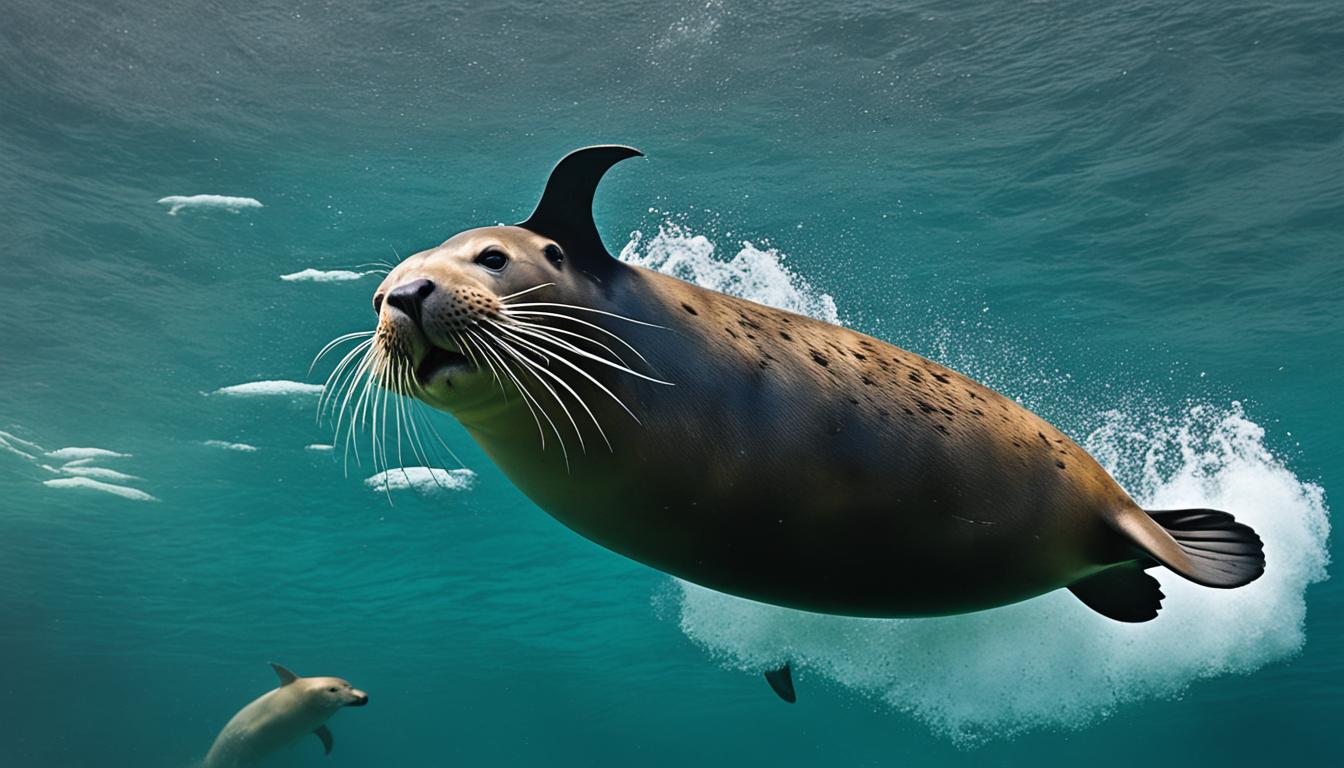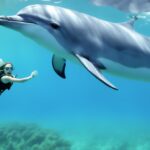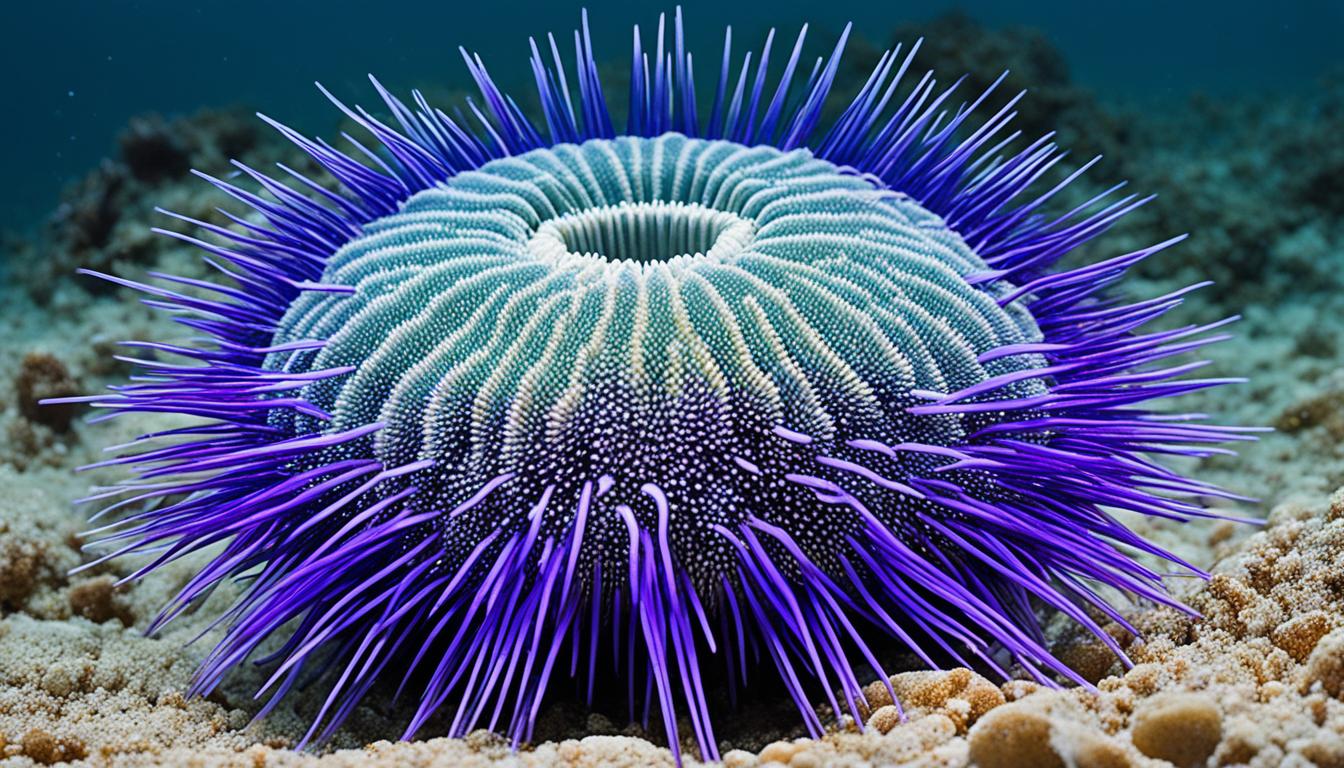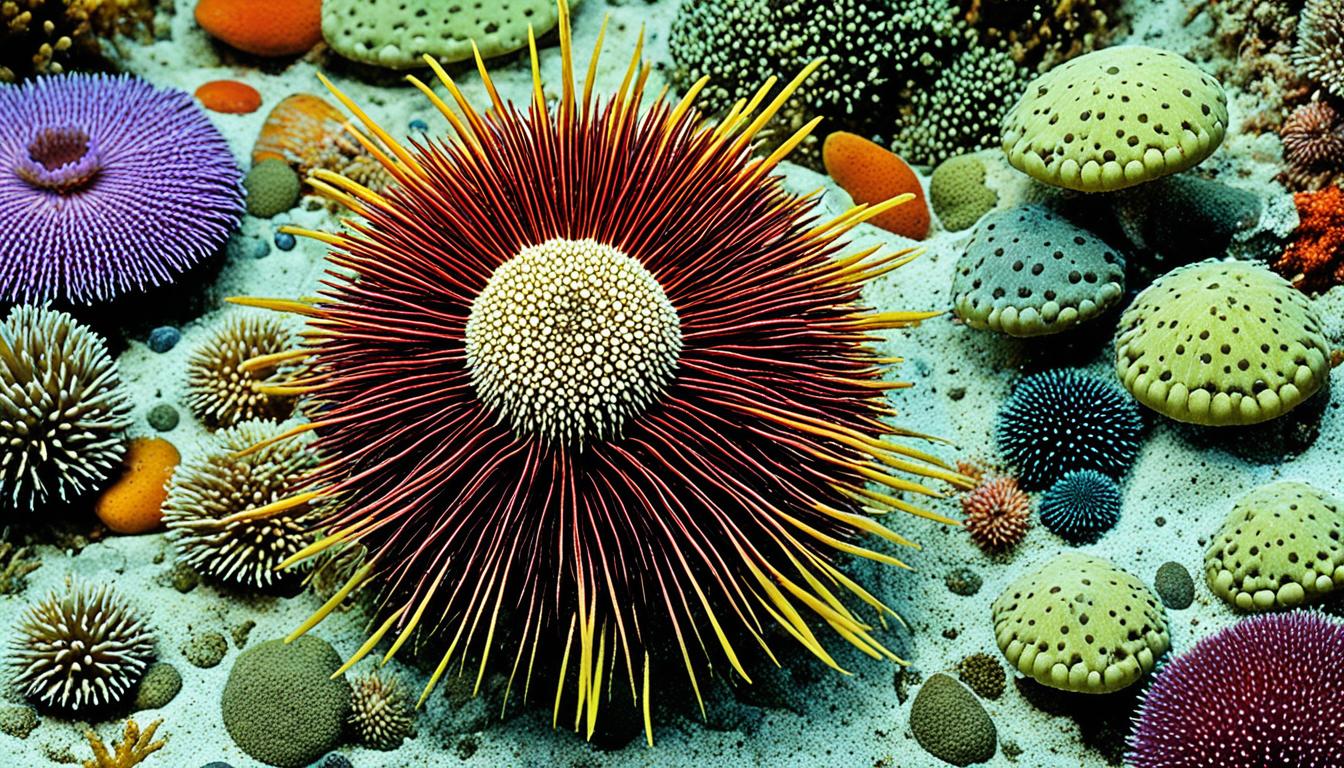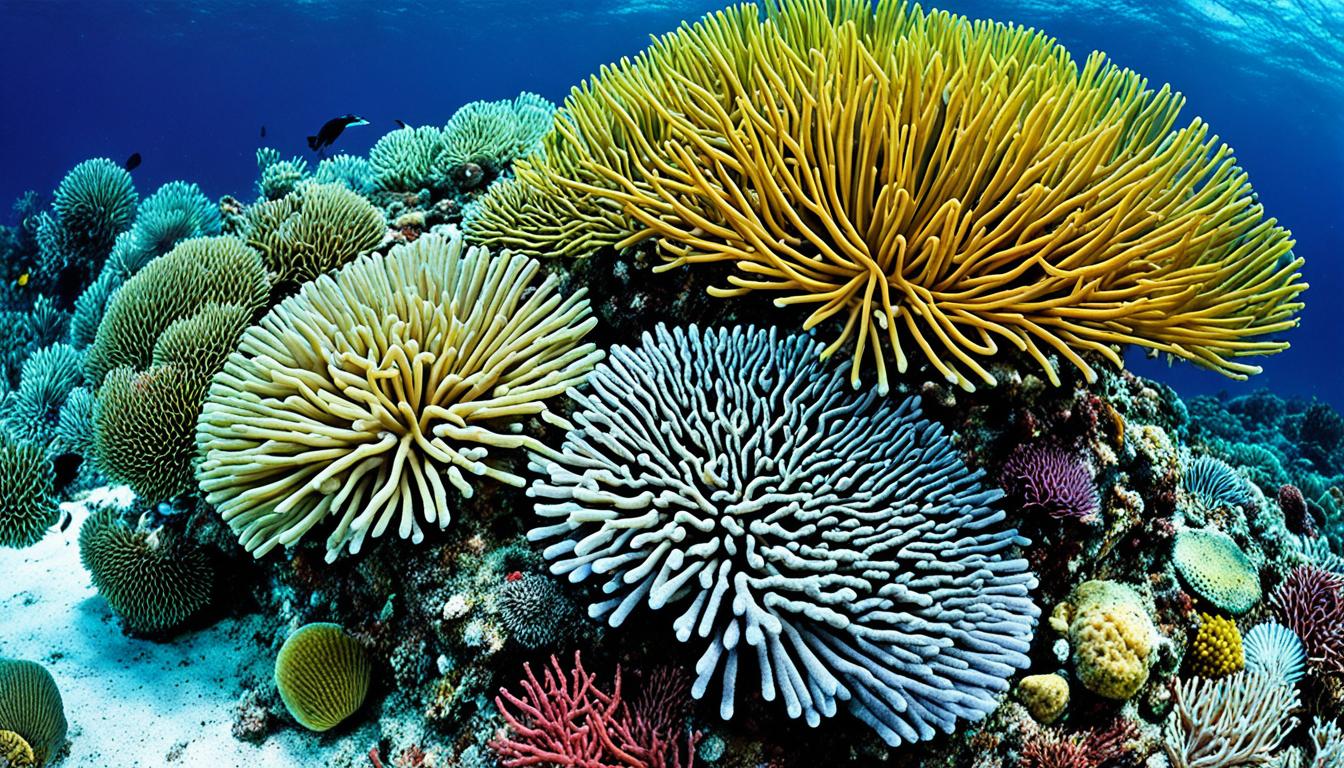Sea lions, especially the California sea lion (Zalophus californianus), have amazing adaptations. These help them live in different marine ecosystems. It’s important to know how they adapt to understand their strength.
They have special physical traits, smart behaviors, and social structures. These help them face the challenges of their home. In this article, we’ll look at the sea lion adaptations that make them successful in the wild.
Understanding Sea Lion Adaptations
Sea lions have amazing adaptations that help them live in different places. Their bodies are built in ways that let them hunt and survive well. Let’s look at how their special traits help them do this.
Physical Characteristics of Sea Lions
Adult sea lions have strong bodies that are key to their survival. Males are big and muscular, with a big forehead for showing off during mating. Females and young sea lions are more slender, which helps them move fast in the water.
Their front flippers are like human hands, making them very flexible. This lets them move through the water and handle things, which is useful for hunting and taking care of their babies.
Key Features that Aid in Survival
Sea lions have a thick layer of blubber under their skin. This keeps them warm in cold water. It also helps them when food is hard to find by storing energy.
These adaptations help sea lions hunt and survive. They make their behavior in their home environment better. They also help them work with the bigger ecosystem.
| Physical Adaptation | Purpose |
|---|---|
| Robust Body Structure | Facilitates territorial displays and dominance |
| Streamlined Form | Enhances agility and speed in water |
| Fore Flippers | Improves navigation and object manipulation |
| Thick Blubber Layer | Provides insulation and energy reserves |
How do sea lions adapt to their environment?
Sea lions have amazing ways to survive in different coastal places. Their hunting skills and social ways help them live in various habitats.
Behavioral Adaptations in Hunting
Sea lions are quick and agile in the water, perfect for catching fish and squid. They use their strong front flippers to move forward and their back flippers to steer. This lets them hunt well and eat what’s available to stay alive.
Social Structures and Interactions
Sea lions also have strong social groups that help them survive. They live together in big groups on beaches or in the water. They use sounds to talk to each other, especially with their babies. This helps with caring for young and increases the chance of successful breeding.
Their social bonds make them better at facing challenges in their environment.
Physical Adaptations for Survival
Sea lions have amazing physical traits that help them survive in different places. They have blubber for staying warm and flippers for moving in water and on land. These traits show how well they can handle challenges in their homes.
Blubber and Insulation
Sea lions have a thick layer of blubber. This fat layer keeps them warm in cold water. It also gives them energy when they don’t eat for a long time, like during the breeding season for males.
This insulation and energy storage help them survive and stay fit in harsh conditions.
Flipper Functionality in Water and Land
Sea lions have special flippers that help them move in water and on land. Their front flippers are shaped like paddles, letting them swim fast, up to 21.6 kph (13.4 mph). Their back flippers help them steer underwater.
On land, both flippers let them walk in a unique way. This helps them rest and breed on beaches and rocky shores.

| Adaptation | Description | Significance |
|---|---|---|
| Blubber | Thick layer of fat | Insulates against cold water |
| Fore Flippers | Paddle-like shape | Agility in swimming |
| Hind Flippers | Steering capability | Enhanced maneuverability |
| Walking Ability | Unique movement on land | Facilitates beach and shore access |
Sea Lion Habitat Requirements
Understanding what sea lions need for their habitat is key to seeing how they live in their world. Their homes greatly affect where they live and how they interact with the world around them.
Preferred Habitats and Geographic Distribution
California sea lions live in the eastern North Pacific, from Vancouver Island to Baja California, Mexico. They like different places such as:
- Sandy beaches
- Offshore rocks
- Man-made structures like piers
These spots are great for resting and surviving. The geography of their homes helps them hunt and have babies, which is important for their survival.
Impact of Environmental Changes on Their Habitats
Changes in the environment are big challenges for sea lions. Climate change changes water temperatures and food, making it harder to find food. This affects how well they can survive.
Humans also harm their homes with fishing and building along the coast. This leads to fights over resources, putting sea lions at risk. Knowing this helps us work on saving sea lions and their homes.
Ecological Niche and Diet of Sea Lions
Sea lions are key players in their ecosystems, using their skills to find food wherever they can. They mainly eat fish like mackerel, squid, and rockfish. This shows how they can change their diet based on what’s available in their world.
Sea lions have smart ways of finding food. They hunt in shallow waters but can go deep if needed. They can hold their breath for up to 10 minutes, helping them catch prey in dark or unclear waters. Their sharp eyesight and whiskers are key to spotting food.
Their diet shows how they adapt to their environment and interact with local fisheries. This often leads to competition for food. Watching these amazing creatures, it’s clear they play a big role in marine ecosystems. Their hunting and eating habits show how they live and affect their home.

